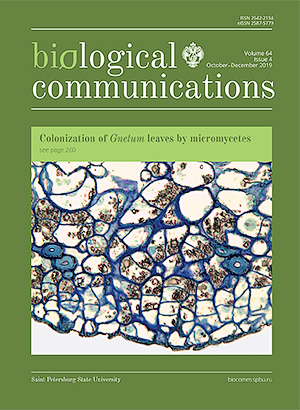Increasing corvid tolerance to humans in urban ecosystems with increasing latitude
DOI:
https://doi.org/10.21638/spbu03.2019.404Abstract
The rapid growth of cities causes behaviour changes in birds in response to urban environmental factors. The avian response to human disturbance has recently been studied by a non-invasive research tool as an alert distance (AD) and a flight initiation distance (FID) assessment. The tolerance of hooded crows (n = 395), jackdaws (n = 394) and rooks (n = 169) to humans was assessed by AD and FID. It was shown that the FID of all species is maximal during the summer, when the parents send clear “danger—fly away” signals to the young and the birds fly away. The AD and FID of the three species reliably correlates with the season. Rooks showed FID species-specificity in seven cities of Eastern Europe. Comparison of the attitude of birds to people in cities that have similarities in human culture showed that tolerance increases with increasing latitude in all species and is statistically significant only in the jackdaw. This should be taken into account in environmental protection measures.
Keywords:
animal behaviour, alert distance, flight initiation distance, Corvus cornix, Corvus monedula, Corvus frugilegus
Downloads
References
Downloads
Published
How to Cite
License
Articles of Biological Communications are open access distributed under the terms of the License Agreement with Saint Petersburg State University, which permits to the authors unrestricted distribution and self-archiving free of charge.





